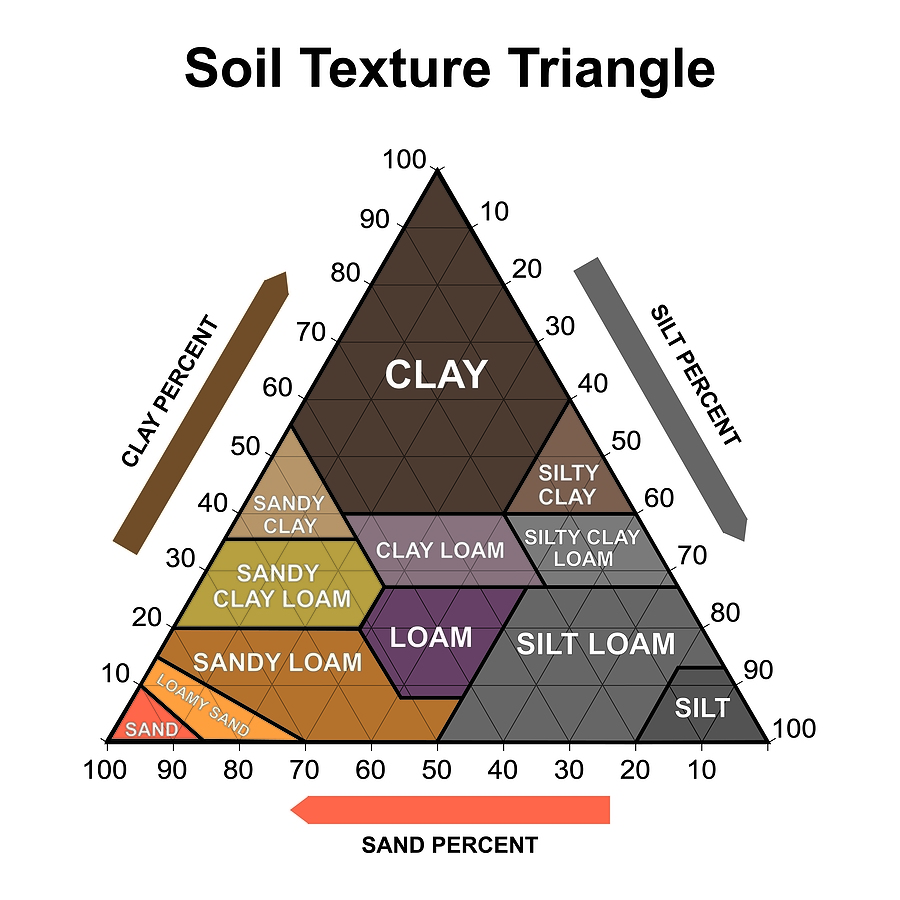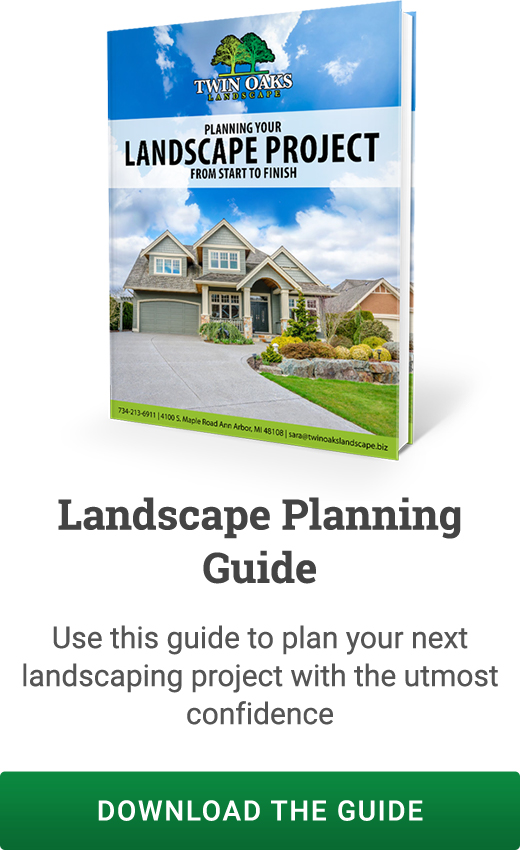July 6, 2023
No matter how much time you spend on your lawn and garden, if the soil isn’t healthy, your plants won’t be either. Good soil makes a real difference in the health and vitality of your landscaping. It provides ideal conditions for plants by anchoring roots and storing nutrients, as well as filtering the water needed by plants to grow.

Soil Composition
Soil is made up of the main components of air, water, mineral matter, and organic matter. Soil composition depends on various combinations of these components and will vary across landscapes. The mineral matter will have different percentages of sand, silt, and clay. The organic matter is called humous and is made from Leaf litter & Decaying material.
A very brief list of some types of Soils and Plant Nutrients follows, but you can find out more about your soil composition and essential plant nutrients, by having your soils tested. Contact your County Extension Services to find out how.
Types of Soil
To the inexperienced gardener, soil is soil. But plants may or may not be very adaptive to certain types of soil. Silt, Clay, & Sand are the major inorganic components of soil, and different combinations of these make up different types of soils that are better or worse for different kinds of plants.

-
Clay
Clay is a fine textured soil. Clay rich soil is often very compacted, which can make it difficult to work with. However, clay can have a high amount of nutrients, and Clay holds water well.
-
Clay Loam
Clay loam is a medium textured soil with a tip toward more clay and less silt and sand. Silt can help sand and clay mix effectively.
-
Silt
Silt is made up of rock and mineral particles that are larger than clay but smaller than sand.
-
Loam
Loam is a medium textured soil. Loam has a good balance of sand, silt, and clay; and with a healthy mix of organic matter this creates a perfect blend for many landscape plants.
-
Loamy Sand
Loamy sand is a coarse textured soil. It has a good balance of inorganic (mineral) and organic matter (composting materials) but has more sand and/or silt than clay.
-
Sand
Sand is a very coarse textured soil. Sand particles are the largest soil particles, and sandy soil will not keep moisture well. However, sandy soil is excellent for aeration, which will allow oxygen to reach plant roots.
-
Humous
Organic Leaf litter & Decaying material (also Compost)…This component of soils provides much of the essential nutrients for healthy growth in plants.
A good landscaping expert can help you determine the general type of soil you have and especially how best to work with the soil to help particular plants thrive.
For example, while loam is the best for many plants, some plants may like more sandy soils, still others prefer more clay-like soils. There are even plants that thrive in soils with very little organic matter.
One can mix certain soil fertilizers and organic materials (amendments) into the soil that will help achieve the right balance for the nutrients your plants need to grow well. Knowing each plants’ needs is a specialty that you want on your team of Landscape professionals.
Essential Soil Nutrients
There are generally twelve mineral nutrients that are needed for optimal plant growth and health. They are divided into primary, intermediate, and micronutrients (trace elements). Many fertilizers have the primary
-
Primary
The primary nutrients are Nitrogen, Phosphorus, and Potassium (NPK.) These three nutrients are included in many commercial fertilizers.
-
Intermediate
The intermediate nutrients are sulfur, magnesium, and calcium. Together with the primary nutrients, they are referred to as “macronutrients” of soil.
-
Micronutrients
Micronutrients make up the rest of the essential elements and are usually required by plants only in small quantities. However, a deficit in a micronutrient will still impact plant growth and health.
Why is Good Soil Important?
Good soil facilitates plant growth, making it extremely important to a healthy lawn and garden. The three major ways good soil helps plants are:
- Aeration: varied particle sizes create a loosely packed soil that allows oxygen to flow freely
- Nutrient Retention: Enough clay and inorganic material can ensure nutrients cling to the soil instead of being washed out with water.
- Moisture Retention: Water drains through good soil at the ideal pace, which is slow enough to allow plants to absorb the moisture, but fast enough to prevent the soil from becoming soggy.
How Can You Improve Your Soil?
If your soil is too heavy with clay, adding sand or silt may help, but the key to fixing a soil with an imbalance of components is to blend it with organic matter. Mixing organic matter into the soil attracts beneficial organisms that will create a high-quality loamy soil. This can be done by adding a two inch layer of organic matter to your topsoil at the end of the growing season. Compost, manure, dried leaves, peat moss, and/or grass are all beneficial additives. Soak the organic matter until it is waterlogged, and let it rest throughout the winter. In spring, work the organic material layer into the topsoil, going down about 6-8 inches. This process can be repeated as needed.
Soil structure, while usually determined by the environment, can be damaged by poor management and improved with enhancements and careful attention. Your landscaping experts at Twin Oaks Landscape can help you look at your soil and develop the best plan to make it as healthy as possible. They can also determine which types of turf and plants will do better in certain soils, so your plants and lawn will thrive.
Gallery
“We recommend Twin Oaks to any entity looking for a full-service, talented, and responsive provider.”
